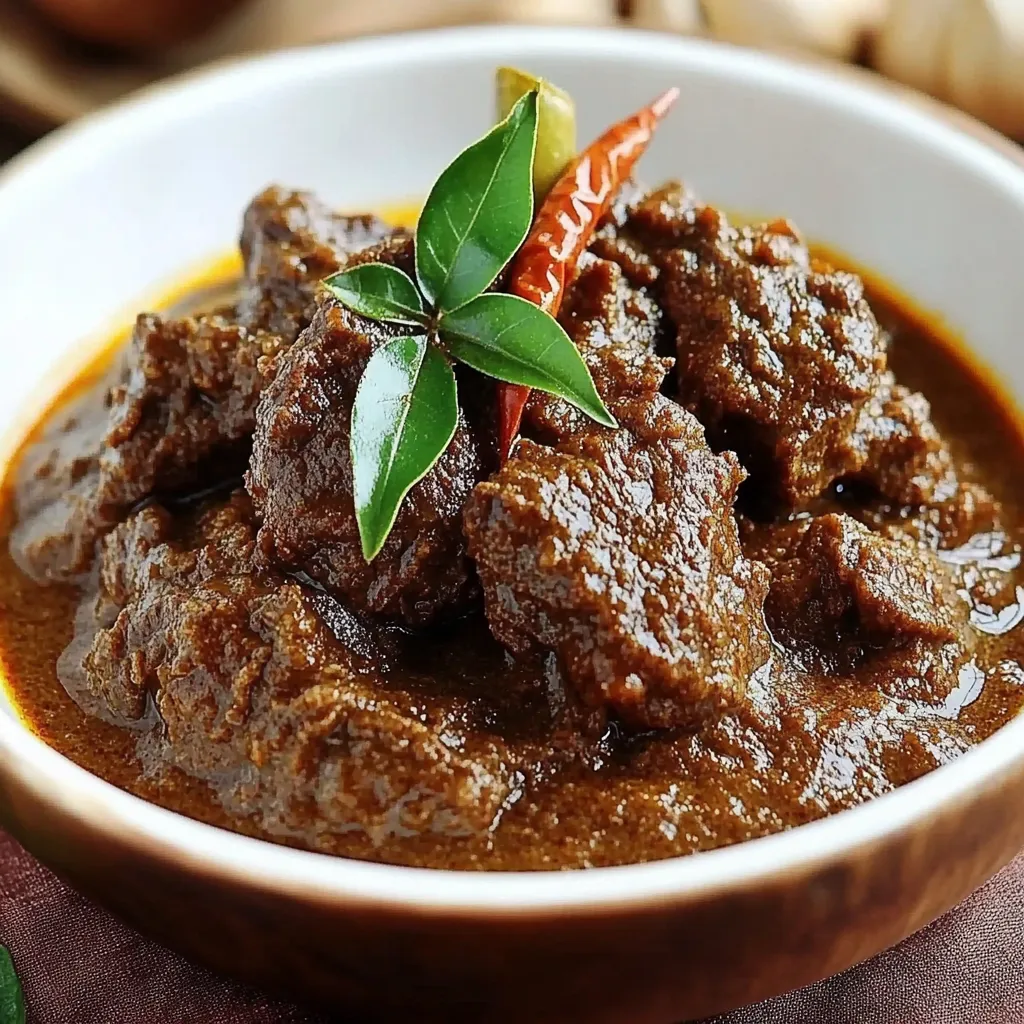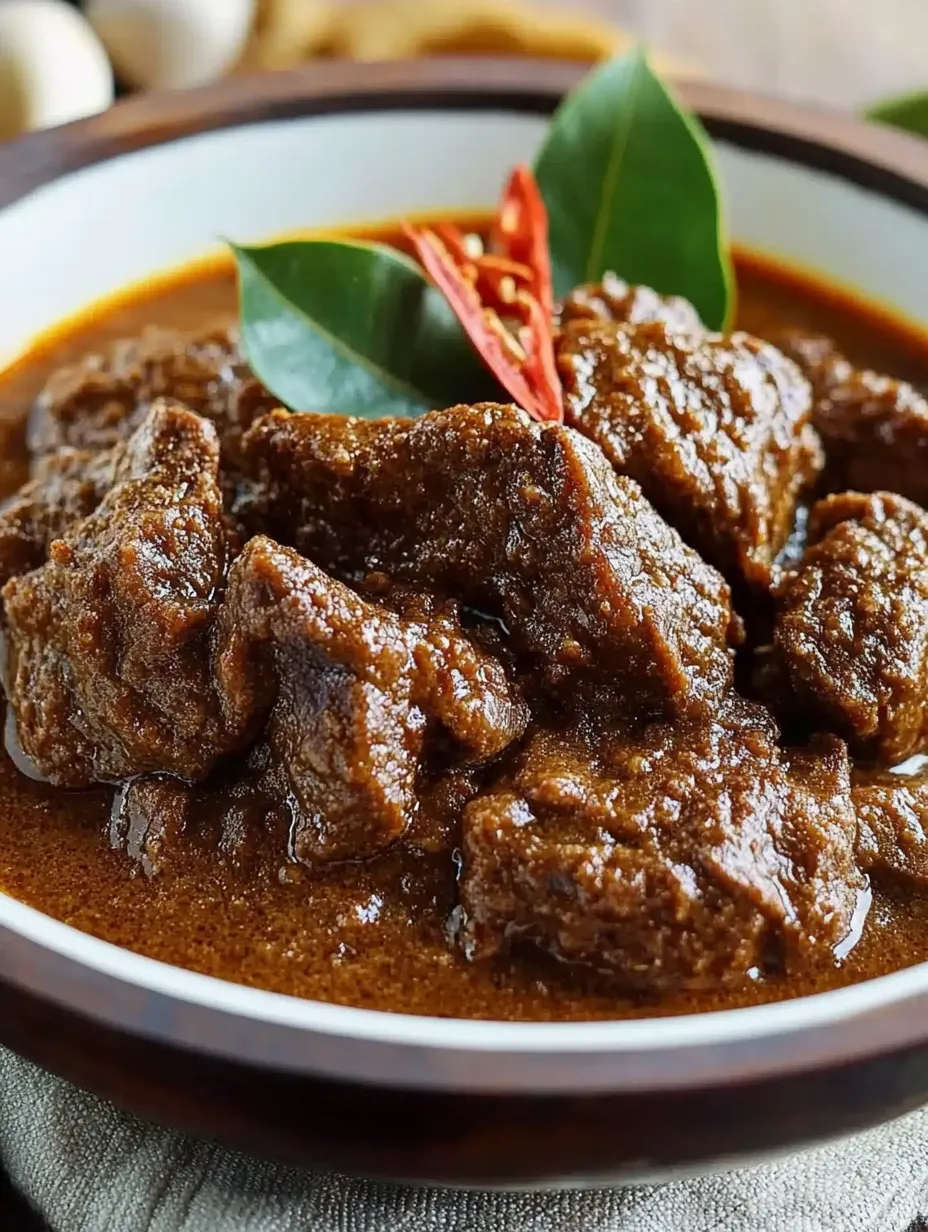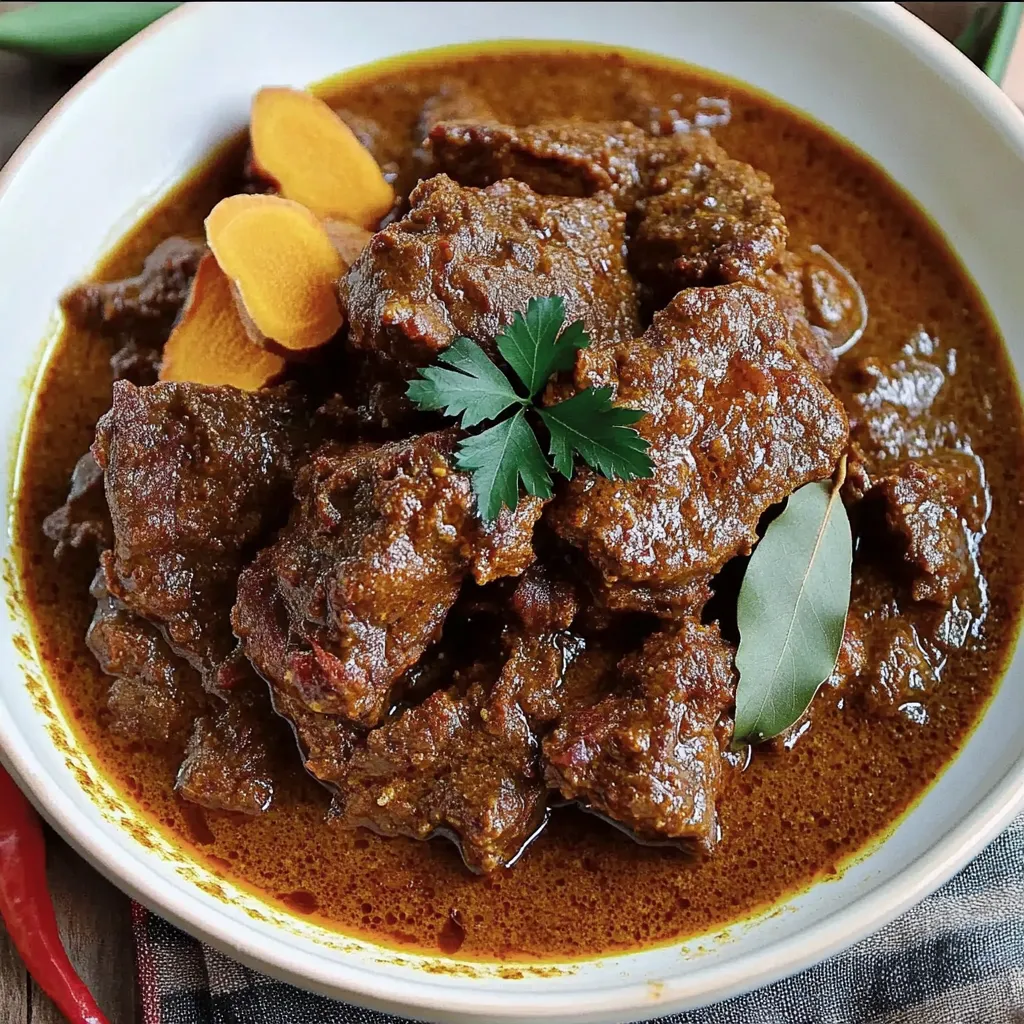 Pin it
Pin it
This rich, aromatic beef rendang transforms everyday beef into a caramelized treasure through patient, slow cooking. The complex flavor profile develops as coconut milk reduces around tender beef, creating one of Southeast Asia's most celebrated dishes that gets even better with time.
I first made rendang for a dinner party where I wanted something that could be prepared entirely ahead. Three years later, guests still mention this dish and how the layers of flavor seemed to unfold with each bite.
Ingredients
- Beef chuck or brisket: beef with good marbling creates the melt in your mouth texture rendang is famous for
- Coconut milk: use full fat for authentic richness and proper reduction
- Chili powder: adjustable to your heat preference but essential for traditional color and warmth
- Turmeric leaf: brings a subtle citrusy note that commercial turmeric powder lacks
- Lime leaves: these fragrant leaves provide the distinctive citrus aroma
- Bay leaves: add subtle depth and earthiness
- Lemongrass: provides citrusy brightness that cuts through the richness
- Star anise: contributes a licorice sweetness that balances the savory elements
- Coriander: adds warm citrus notes that enhance the other spices
- Nutmeg: brings subtle sweetness and complexity
- Shallots: milder and sweeter than regular onions for the spice paste
- Garlic: essential aromatic foundation
- Ginger: adds warmth and slight spiciness
- Galangal: similar to ginger but with citrusy pine notes
- Fresh turmeric: provides earthy flavor and golden color
 Pin it
Pin it
Step by Step Instructions
- Prepare the Spice Paste:
- Combine shallots, garlic, ginger, galangal, and fresh turmeric in a blender. Add a few tablespoons of water to help create a smooth paste. Blend until completely smooth with no remaining chunks. The color should be a vibrant golden yellow from the turmeric.
- Start the Base:
- Pour coconut milk into a large heavy bottomed pot or Dutch oven. Add the prepared spice paste, chili powder, turmeric leaf, lime leaves, bay leaves, crushed lemongrass, star anise, coriander, and nutmeg. Stir thoroughly to combine all ingredients before adding any meat.
- Add the Beef:
- Place beef chunks into the coconut milk mixture ensuring each piece is fully submerged. Add water and bring the mixture to a gentle simmer over medium heat, stirring occasionally to prevent sticking.
- Begin the Slow Cook:
- Reduce heat to very low once simmering. The mixture should barely bubble. This prevents the coconut milk from separating and ensures even cooking. Stir gently every 15–20 minutes to prevent sticking and promote even reduction.
- The Transformation Stage:
- After about 2 hours the liquid will begin noticeably reducing and thickening. Stir more frequently at this stage about every 10 minutes to prevent burning as the sauce concentrates.
- Final Concentration:
- During the last hour the liquid will continue reducing until oil separates from the coconut milk, creating a dark caramelized coating around the meat. The beef should be fork tender and deeply infused with flavor.
The galangal in rendang completely transformed my understanding of Southeast Asian cooking. My Indonesian friend's grandmother once told me that rendang without galangal is like bread without salt—perhaps technically edible but missing its essential character. After trying various versions I completely agree with her assessment.
Storage and Aging
Rendang famously improves with time as flavors meld and deepen. Store in an airtight container in the refrigerator for up to one week; the flavors will actually peak around days 2–3. The natural preservative qualities of the spices and reduced coconut milk extend its shelf life beyond typical stews. For longer storage, freeze portions in airtight containers for up to 3 months. Thaw overnight in the refrigerator and gently reheat on the stovetop.
Substitution Guide
Finding traditional ingredients can be challenging outside Southeast Asia. If turmeric leaves are unavailable, substitute with 1 teaspoon of lemon zest plus 1/4 teaspoon ground turmeric. Dried lime leaves work nearly as well as fresh—just use half the amount. Galangal is unique, but in a pinch, use more ginger with a pinch of lemon zest. For a quicker, though less authentic version, use a pressure cooker for 45 minutes followed by uncovered simmering to reduce the sauce.
Serving Traditions
In Indonesia, rendang is traditionally served with plain steamed rice, which provides the perfect neutral canvas for the rich flavors. For a complete meal, add simple cucumber slices and sambal, a spicy chili sauce, on the side. Some regions serve rendang with ketupat, compressed rice cakes that soak up the concentrated sauce. The dish is a centerpiece at celebrations and weddings, representing prosperity and patience in Indonesian culture.
 Pin it
Pin it
The Cultural Significance
Rendang originated from the Minangkabau people of West Sumatra and has become one of Indonesia's national treasures. The slow cooking process was traditionally a preservation method in tropical climates. UNESCO recognized rendang as one of the World's Most Delicious Foods and its preparation is often a communal activity, bringing families together. The patience required for authentic rendang symbolizes the Minangkabau philosophy of deliberation and wisdom.
Frequently Asked Questions
- → How can I ensure the beef is tender?
Cook the beef over low heat for 3-4 hours while stirring occasionally. The long cooking time and low heat help to tenderize the beef.
- → Can I use store-bought coconut milk?
Yes, you can use canned coconut milk for convenience. However, freshly squeezed coconut milk enhances the flavor authenticity.
- → What can I substitute for lemongrass?
If lemongrass is unavailable, use a small amount of lemon zest or lime zest as an alternative to replicate the citrusy aroma.
- → Is it possible to make it less spicy?
You can reduce the amount of finely ground chili to adjust the spice level to your preference.
- → How do I prevent the dish from becoming too salty?
Be cautious with the initial salt amount since slow cooking intensifies flavors. Taste and adjust salt near the end of cooking.
- → Can I make this in advance?
Absolutely! Beef Rendang tastes even better the next day as the flavors continue to develop over time.
